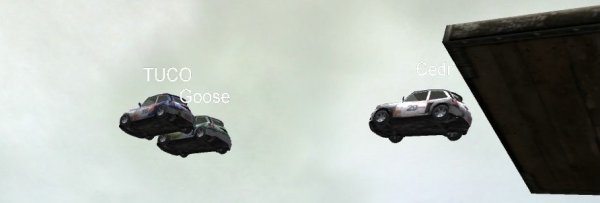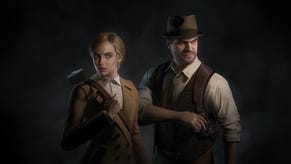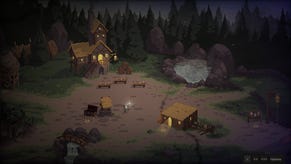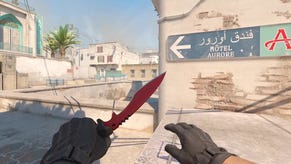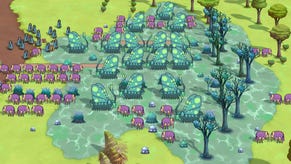The Making of: Trackmania
[Since the new Trackmanias are tearing up the internet, I thought it'll be a good time to dig out a Making of interview with Nadeos's Florent Castelnerac. This interview was performed in the lead up Trackmania Sunrise and focuses primarily on their first game. Florent was agreeably driven and funny, even through the occasionally broken English. Re-reading this a few weeks after I wrote about the rise of the PC arcade game in the Eurogamer review of Trials 2 amuses me.]
Any independent developer immediately has an uphill battle. They face opposition in the form of an industry that seems to think that any such initiatives are frankly impossible in the days of EA’s three-hundred men teams. However, PC arcade developers have it even harder. While the giants of PC gaming like 3D realms and ID originally made their names with freeware arcade 2D shooters, the idea that the consoles are where you go for simple play and the PC audience always demands something more (or, at least, something more deliberately cerebral) has become entrenched. Well… at least something more cerebral which doesn’t involve shooting in the first person perspective.
It’s the problem which faced Nadeo with their Trackmania. Initially ignored by publishers and forced to go the download route, they found an appreciative audience for their unique vision, which eventually secured them a real world release and a sequel. Perhaps Trackmania is interesting in that while it’s an extremely simple arcade game, it’s also an arcade game that'd have as much trouble working on the consoles. In the modern age, it breaks the laws of the genre by only having three separate cars. Instead, it placed its development attention on the actual courses, allowing people to put together tracks easily that can be then raced. In fact, outside its highly competitive multiplayer, its stroke of genius was bringing the trackbuilding element into the actual game, forming a racing/puzzle hybrid. With a number of building bricks, you were asked to complete a course, which you then had to race around within limits. In other words, if you failed to do so, it could be to do with either your failings in design or actual racing aptitude.
With our audience with French developer Nadeo, specifically development director Florent Castelnerac, reveals that it’s not only in the area of what they make which makes them different from most developers. They have a considerably different attitude to the painfully organised structure we may be used to. When asked for where the game came from, the response was simple. “It came from the toy – the fact that you can build tracks and have a car on it,” says Florent, “You can build short tracks or long tracks, free ride tracks… you play it like you want”.
Particularly interesting, they reject the idea of overt planning and even the concept of postmortems. To sit down with a grand overarching design document and a painful process of examining an idea long after the fact is something they completely reject. “It’s not our way to work. We want to make it in real time,” says Florent, “We want to make the game every day”. Changes are made, and tested immediately. “So if some things we think are going wrong or right… well, if it’s going right, we continue… but it’s a surprise if it works. It means we are lucky.”
Rather than blueprints, they favour the improvisational approach. “I will build a house. Right… we’ll have a window over here, or something,” says Florent, “It’s not so much about pinning it down.” Of course, such flexibility is only possible when you’re working in the way Nadeo are. “We have to be a small team to be able to do that,” he says, “When people schedule big projects, they have to make choices before. So they have to plan, and sometimes they plan good things… and other times they plan bad things. Then they look back, deciding what went wrong or right, gaining experience through that. Our goal is to adapt every day and try to progress every day”. Having a team small enough to play loose isn’t the only thing needed to use this reiterative survival-of-the-fittest-ideas approach to game design. “So we have feedback on our game, we have to play our game every day from the beginning to the end,” says Florent, “So we can have feedback, play with other people, play with people who don’t know the game…and have feedback any time”.
The fact that the game, essentially, is highly playable at every point in its development does have other advantages. “That’s exactly how we release the game,” says Florent, “There’s people who say “When it’s done”. And there’s people who say “You have to be on schedule”. But it’s quite different for us. We develop the game every day, and when we have to release something – because you can’t go on for ten years – we’ll release something”. For an independent developer this is an important thing to bear in mind. Even the biggest teams are often forced into releasing something before they’re ready, so by having a game that’s designed with that in mind, you’re able to circumvent the worst problems of releasing a game that just isn’t done. There are other advantages too. “The quicker you can release things, the better it is for the players – though you have to be aware not to ask another sixty-Euros for something useless,” grins Florent, “Bring something new every time. That’s our goal. Some people have to make big projects because they know about those games, but the small studio and independent has to find new directions.”
You have to wonder about the process, however. We ask whether it’s a problem that they make a decision which causes problems they don’t realise for a long time, and how awkward that is. Florent, for once, displays a little of the more standard this-went-wrong-this-went-right “It can take much time to find that something isn’t working,” he admits, “For example, in the first game, we chose the game to be in an amusement park. But it wasn’t an environment that was really good for building your scenery – it was too ritualised. We started to work on it… and then we changed it. It was something that went wrong, but you have to go through that process to be able to discover what we wanted to do in the new environments.”
Their love of feedback clearly stretches to their determined community. “It was a question in the beginning whether we’d do multiplayer,” he explains, “but no question today, because of the community.” How closely do they interact? “We play with them. We chat with them. We’re in the forums. We’re like them. We think of Trackmania 24-7. We know what the principles of Trackmania are… but they bring us lots of things to think of, and the flow of ideas which comes from there”
How much would they recommend their playing techniques “The most useful thing in playing it every day is that you can make simple choices,” he explains. While developers worry about their game not being any fun, and just throw additional features at it, they can actually see on a day to day basis what works and what doesn’t. Not that Publishers seemed to understand this. “You can’t sell to a publisher a simple idea, as they can’t be addicted to their game without actually starting to play with it,” says Florent. Even then, many predetermined ideas of what made a good driving game got in the way. “It was like “How many cars! No – can’t have a game with three cars?”,” laments Florent, “But the game is in the blocks, not in the cars. That’s the trick.”
The search for an independent minded publisher who didn’t just want to make Hollywood-like games proved hard. In fact, some publishers were actively dismissive of them. “They were really insulting,” says Florent, “”Stop doing videogames!” They considered us not able to do videogames. It was very tough”. And what advice would he give to anyone thinking about heading along a similar route? “If you want to create a company… well, it’s hard,” he grins, “To create a development studio… well, you never see the top of the mountain. You always think it’s a step above, or two steps above … but it’s actually thirty steps above.” He also suggests heading away from the mainstream ideas. “We were really LOW underground when we met a publisher and said to us “Stop”,” says Florent, “So we decided to bury even deeper, and we’re only just getting out of it. Like in videogames, you need to continue and to believe.”
But most the most important attribute for an independent developer? “Bring something that doesn’t exist,” says Florent, “Because if you want people to buy what you’re doing, you need to bring something new”. Why should someone be interested in another standard RTS or FPS, after all? “It’s easy to duplicate games,” says Florent, “If it was bread, we could easily make more bread. But for games you need to bring something new. It’s not the concept that’s the major point, but the fact that you want to bring something by yourselves to the audiences. Your qualities. People will want to take your qualities home.”
But be sensible. As an independent developer, getting something done and out into the world is of paramount importance. “Find the SMALLEST project to express this,” says lorent, remembering the development process., “Take the time you have to do the project and then pretend you have a fourth of the time to do it. You need four times what you schedule. Then you MAY do it. You never have enough. You can’t predict the work you have to do.”




